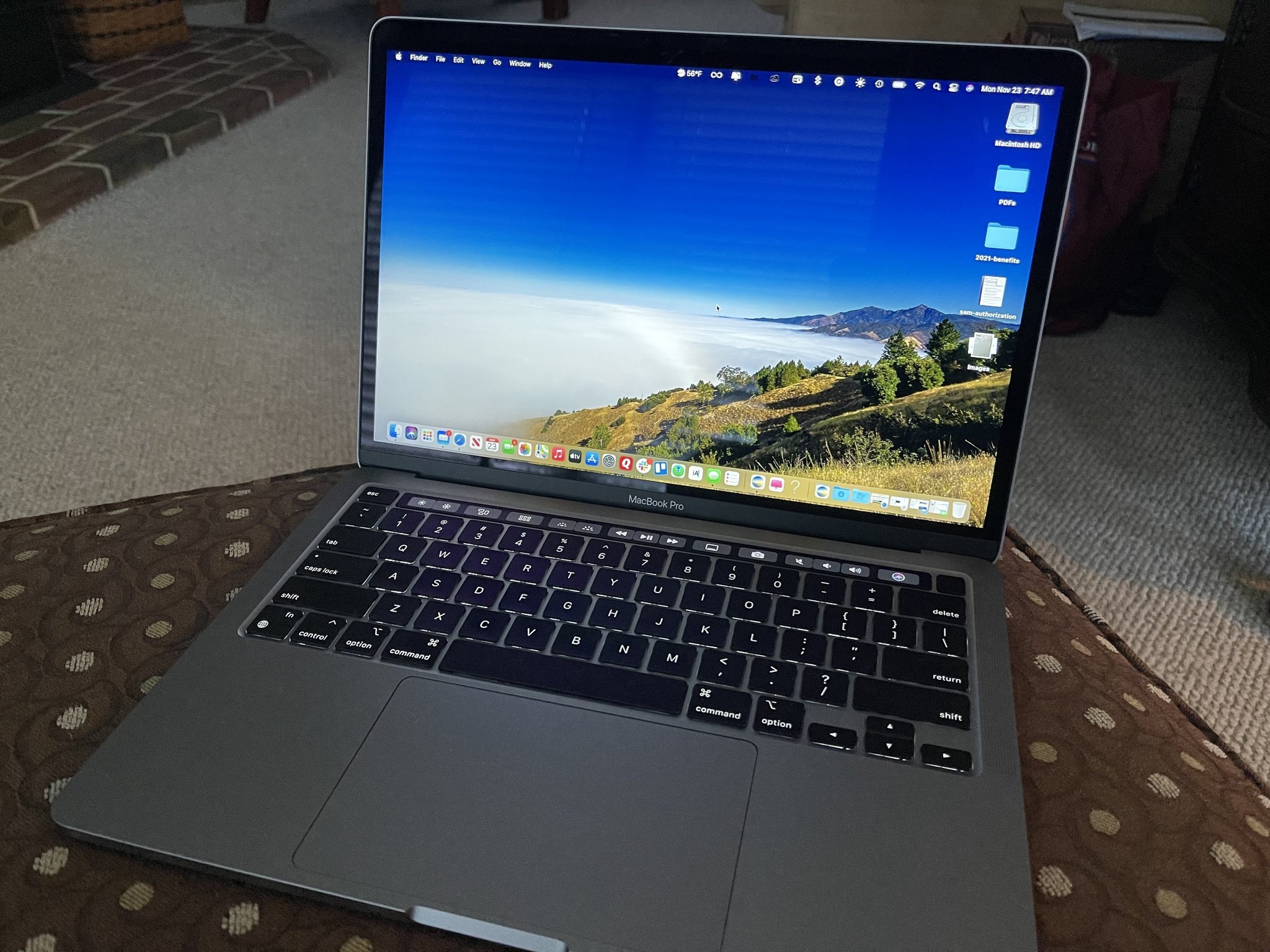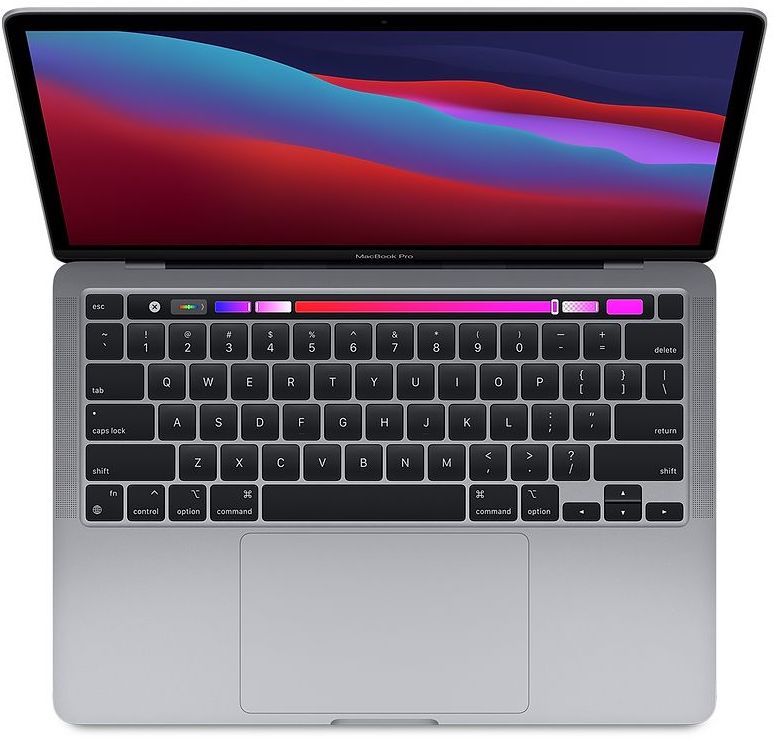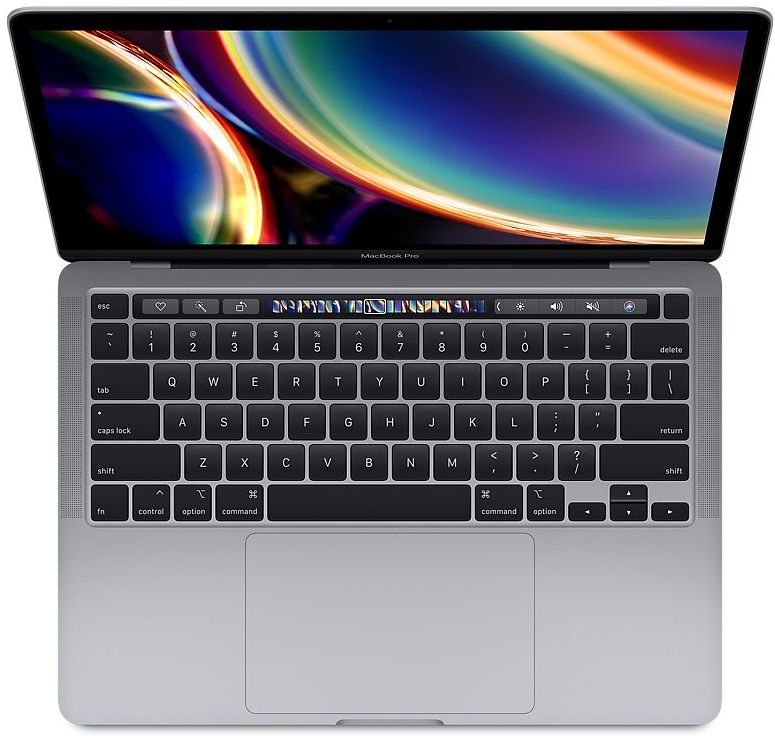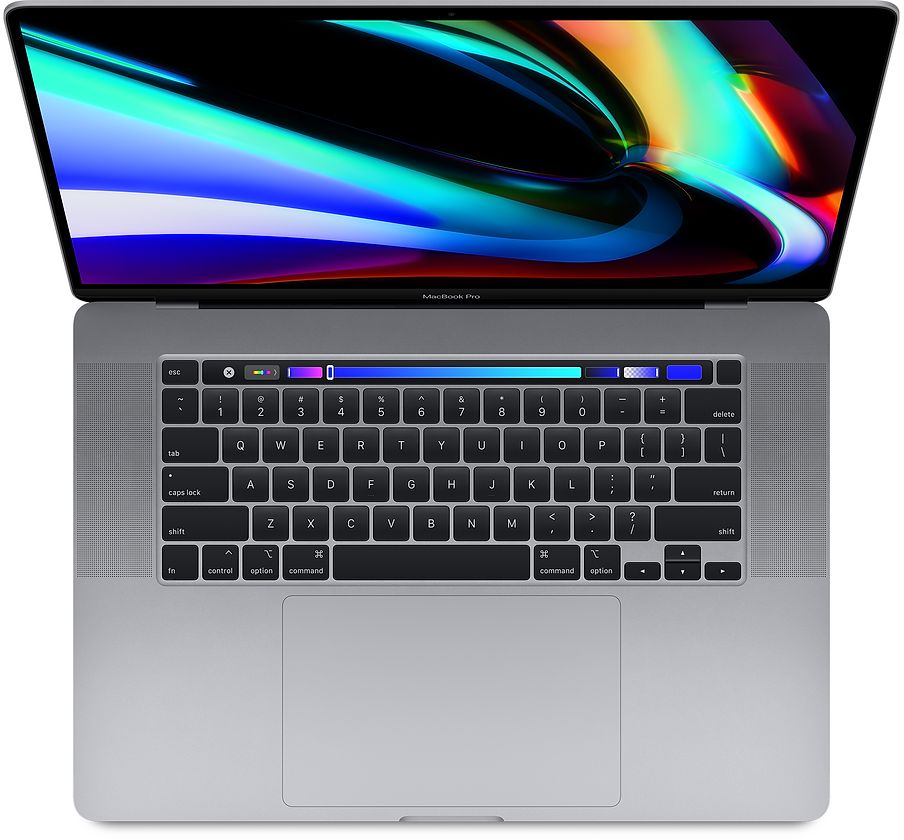How Do I Turn On Location Services On My Macbook Pro
 Source: Bryan M. Wolfe / iMore
Source: Bryan M. Wolfe / iMore
MacBook Pro may audio like one product, but with the introduction of Apple silicon, that'due south no longer the case. There are several options now that you must consider when choosing between a xiii-inch and 16-inch model. Are you comfortable going with Apple tree's new internals, or would y'all rather stick with Intel? How much storage practise yous need? Allow's interruption everything down.
MacBook Pro lineup
 Source: iMore
Source: iMore
As of Dec 2020, Apple tree'due south MacBook Pro lineup includes 13-inch and 16-inch models. The one-time is bachelor with Apple'south all-new M1 system on a chip (SoC) or an Intel processor. The larger model is merely available with an Intel processor at this time. At that place's too a 13-inch MacBook Air, which isn't discussed here.
Displays
 Source: Rene Ritchie / iMore
Source: Rene Ritchie / iMore
For many, your choice of laptops may ultimately come down to screen size, one style or another. Having a smaller brandish means having a smaller machine to lug around, but a larger brandish means seeing more of your documents, images, or videos — or more than details on them.
The 13-inch MacBook Pro has a LED-backlit display with IPS engineering science; 2560-by-1600 native resolution at 227 pixels per inch with support for millions of colors. The supported scaled resolutions include 1680 past 1050, 1440 by 900, and 1024 past 640.
The 16-inch MacBook Pro has a LED‑backlit brandish with IPS engineering science; 3072‑by‑1920 native resolution at 226 pixels per inch with back up for millions of colors. Supported scaled resolutions are 2048 by 1280, 1792 by 1120, 1344 by 840, and 1152 by 720.
Both MacBook Pro models back up DCI-P3 wide color gamut and other advanced technologies that provide brighter reds, deeper greens, and blacker blacks. They too include 500 nits brightness and True Tone technology.
Hither'southward how the pixel differences look side-past-side:
 Source: iMore
Source: iMore
- If yous want the most portability, y'all want the 13-inch MacBook Pro.
- If you want the largest possible display, you want the 16-inch MacBook Pro.
External displays
You can also use external displays with the MacBook Pro. At that place are differences to consider, notwithstanding.
The Apple M1 13-inch MacBook Pro can support one external brandish with up to 6K resolution at 60Hz. In comparison, the Intel models tin run one external 6K brandish with 6016-by-3384 resolution at 60Hz at over a billion colors, or i external 5K display with 5120-by-2880 resolution at 60Hz at over a billion colors, or up to two external 4K displays with 4096-by-2304 resolution at 60Hz at millions of colors.
The 16-inch MacBook Pro can support upward to two displays with 6016‑by‑3384 resolution at 60Hz at over a billion colors or up to four displays with 4096‑past‑2304 resolution at 60Hz at over a billion colors.
- If you desire to drive only 1 5K, consider the Apple M1 13-inch MacBook Pro.
- If you lot rather use two non-5K external displays, y'all desire a 13-inch MacBook Pro.
- If you desire to bulldoze two 5K or four non-5K external displays, you desire a 16-inch MacBook Pro.
About Apple M1
 Source: Apple
Source: Apple
Apple'due south determination to motility away from Intel-based processors requires a new way of thinking when looking at computer specifications. The company'south M1 system on a fleck (SoC) doesn't just include the CPU. Rather, it also integrates the GPU, Neural Engine, I/O, and much more. It's also the first personal calculator chip built using 5‑nanometer procedure technology. This highly technological synergy offers unified retentiveness that's shared across the entire system, which ways improved performance and power efficiency compared to Intel-based systems.
From a buying perspective, what this means, ultimately, is that when choosing an Apple M1 motorcar, you're besides selecting the processor and graphics and have fewer choices when it comes to memory.
Processors
Apple M1 xiii-inch MacBook Pros include an eight-core CPU with 4 performance cores and four efficiency cores. The former is designed to boost high-intensity jobs similar Xcode compiling and Logic Pro music scoring, while the latter delivers efficiency for lighter weight tasks.
The other MacBook Pros currently offer 9th-generation and tenth-generation Intel processors. The upper tier of the 13-inch MacBook Pro starts with the 2.0GHz quad-core 10th-generation i5 with 16GB of RAM and is configurable up to 2.3GHz quad-core 10th-generation i7. The 16-inch model starts with a ii.6GHz 6-cadre ninth-generation Intel Core i7 processor, or you lot tin can go up to a ii.4GHz 8‑cadre 9th‑generation Intel Core i9 processor.
- For those who want something new, don't care about storage limitations (see below), and like a smaller display, go with the Apple M1 13-inch MacBook Pro.
- If you want expert performance, only plan on doing minimal processor-intensive work, and want to stay with Intel this go-around, then you want a 13-inch MacBook Pro.
- If you want maximum performance for resource-heavy things like video editing, you want an 8-core 16-inch MacBook Pro.
Graphics
 Source: iMore
Source: iMore
The graphics processing unit of measurement (GPU) handles rendering and pushing the pixels. That includes everything from the macOS interface to photo and video editors to video games. The more powerful the GPU, the more pixels information technology can render and push button, and the smoother and better the animations, apps, and the more realistic 3D you'll get.
On the Apple M1, you lot'll find an eight-core GPU that offers five.6 times the graphics operation of a previously released thirteen-inch MacBook Pro model that included a one.7GHz quad-core Intel Cadre i7 with Intel Iris Plus Graphics 645, configured with 16GB RAM and 2TB SSD. Over in Intel's world, the 13-inch MacBook Pro model is available with Iris Plus Graphics.
The 16-inch MacBook Pro version offers both the AMD Radeon Pro 5300M with 4GB of GDDR6 retentiveness or the Radeon Pro 5500M with 4GB of GDDR6 memory (depending on if you become for the base or college-cease model).
You can configure it to AMD Radeon Pro 5500M with 8GB of GDDR6 memory or AMD Radeon Pro 5600M with 8GB of HBM2 memory in the base model, and AMD Radeon Pro 5600M with 8GB of HBM2 retention or AMD Radeon Pro 5600M with 8GB of HBM2 memory with the higher-end model.
- If you need basic graphics and don't program on doing a lot of graphical work or play video games, then you want the 13-inch MacBook Pro. Look at other factors to determine which version to buy.
- If you lot want the biggest graphics boost y'all can get, you want the 16-inch MacBook Pro.
Bombardment Life
When it comes to battery life, the motion to Apple silicon becomes possibly the virtually apparent. The Apple M1 13-inch MacBook Pro features the best bombardment life in the history of the MacBook Pro.
The Apple tree M1 model promises up to 17 hours wireless web, xx hours Apple tree TV app movie playback, and includes a built-in 58.two watt-hours lithium-polymer battery with a 61W USB-C Power Adapter shipped.
The Intel-based 13-inch MacBook Pro model provides up to 10 hours wireless web, 10 hours Apple Telly app moving-picture show playback, and includes a built-in 58.0 watt-hours lithium-polymer battery with a 61W USB-C Power Adapter.
Finally, the 16-inch MacBook Pro promises up to 11 hours of wireless web and Apple tree Television receiver app flick playback with a 100‑watt‑hour lithium‑polymer battery enclosed and a 96W USB‑C Power Adapter.
- No incertitude, the Apple M1 is the one to get when battery life is most important. Otherwise, look at other factors in making your choice.
Memory
The amount of random admission memory (RAM) in your Mac determines how many apps you can keep open up at a fourth dimension, how large your photo or video editing projects can be without having to swap data back and forth on the drive, and otherwise keeps everything super fast. Just once more, Apple'southward movement to the M1 SoC has changed the dynamics.
The M1 flake brings up to 16GB of unified retentivity. This single puddle provides high‑bandwidth, depression‑latency memory, allowing apps to efficiently share data between the CPU, GPU, and Neural Engine.
Meanwhile, the Intel-based thirteen-inch MacBook Pro starts with 16GB 3733MHz LPDDR4X retentivity and can go to 32GB 3733MHz LPDDR4X retentiveness on both tiers. The xvi-inch MacBook Pro starts with 16GB of 2666MHz DDR4 memory and can be upgraded to 32GB or 64GB.
- If you desire the most RAM for all your app use and video editing needs, you desire the 16-inch MacBook Pro.
Storage
Storage used to consist of big, noisy hard drive platters that spun around and didn't accept well to bumps or power issues. At present they're solid-land — Flash fries with no moving parts. They don't hold as much as old-style difficult drives and are however more expensive, but they're ultra-fast and far more resilient.
The Apple M1 13-inch MacBook Pro comes with 256GB SSD or 512GB SSD and is configurable with 1TB or 2TB. On Intel, you can buy the 13-inch MacBook Pro with 512GB or 1TB, upgradable to 2TB or 4TB. The xvi-inch MacBook Pro comes with a 512GB SSD or 1TB SSD, depending on which model you get, and can be configured up to 8TB.
- If you want the largest amount of storage possible — 8 TB — you want the 16-inch MacBook Pro.
- If you want to salvage some money on up-front end costs, you tin nevertheless go up to 2TB or 4TB with the 13-inch Intel-based MacBook Pro.
Ports
Wired connections like USB, Thunderbolt, and HDMI allow you connect to high-functioning accessories like external displays, drives, networks, and more.
Currently, the Apple M1 13-inch MacBook Pro models only accept 2x Thunderbolt 3 ports (USB-4), while the Intel versions have 4x Thunderbolt 3 (USB-C) ports. The 16-inch MacBook Pro has 4x Thunderbolt three (USB-C) ports likewise.
- If your port needs are low or you have a USB-C Hub on-paw, the two-port Apple M1 thirteen-inch MacBook Pro is for you.
- If you lot want a lot of USB-C ports but only need 1 that supports 5K external display connectivity, the 4x USB-C port 13-inch MacBook Pro will do the trick.
- If you want the highest data transfer possible and need ii ports for connecting 5K external displays, the sixteen-inch MacBook Pro is the just one for you.
Force Affect trackpad
Apple at present has Force Touch on trackpads in all the MacBook Pro models. They employ a Taptic Engine to simulate a traditional trackpad's click feeling, but over the entire surface and without the bodily mechanical switch. Some people don't like the feeling, but it adds pressure sensitivity, is less prone to breakdown, and tin can be used in ways beyond a regular trackpad.
- All MacBook Pro models sport a large Strength Touch on Trackpad.
Keyboards
The thirteen-inch MacBook Pro now uses the aforementioned backlit Magic Keyboard that was introduced with the 16-inch MacBook Pro. This means that it eliminates the butterfly mechanism that acquired many bug for users and is at present back to the onetime scissor-switch design. This ways that the keyboard is more reliable than the previous 13-inch MacBook Pros.
The 16-inch MacBook Pro debuted the full-size and built-in backlit Magic Keyboard. The sixteen-inch also has a physical ESC fundamental again while still retaining the Touch Bar with Bear on ID.
Now that both the 13-inch and 16-inch MacBook Pros accept the same scissor-switch Magic Keyboard, there is no real difference between them aside from the size. These are less prone to failure and are much easier and more than comfortable to type with.
- Both the 13-inch and 16-inch MacBook Pros have the aforementioned backlit Magic Keyboard, giving users an improved typing experience.
Affect Bar and Touch ID
 Source: iMore
Source: iMore
All MacBook Pro models now being sold include the Touch Bar OLED with a matte finish that matches the keyboard keys' feel. It can display part keys and organization and media controls, but like the old function row. There'due south also a physical ESC fundamental on the keyboard on all models. The Touch on Bar can also display curated, contextual shortcuts for whatever app y'all're working on at the time. That includes book sliders, content scrubbers, color selectors, and more than.
To the right of the Touch Bar is Impact ID. Once exclusive to iPhone and iPad, now y'all can accept it on the Mac. Information technology works off an Apple T2 chip, which is like a tiny, integrated iOS device embedded right in the MacBook Pro. Information technology handles the secure enclave and secure presentation of Apple Pay information, but that fusion is subconscious away.
- All-new MacBook Pros being sold past Apple come up with the Touch Bar and Affect ID.
Colors
There was a fourth dimension when yous could merely purchase a MacBook Pro in silvery. Today, however, the laptop is besides available in Space Gray. Alas, a aureate finish version (like the MacBook Air) isn't available.
- All models of the MacBook Pro come in both Silver and Space Greyness.
What about Windows?
If you enjoy using Kicking Military camp or a virtualization bundle to run Windows on your Mac, you won't want to select an Apple M1 machine. In that location'due south no Boot Camp bachelor on these models and no official back up from Microsoft to run Windows on these devices. Therefore, if running Windows on your MacBook Pro is important, choose an Intel-based model.
Who should get the thirteen-inch MacBook Pro with M1
The time to come is now with the starting time MacBook Pro to feature Apple tree silicone. Offering a unified Apple M1 SoC, this 13-inch model offers efficiency and speed yous won't find on other models. Still, if you demand more than than 2TB of storage and 2 ports, y'all should look elsewhere.
The newbie and future of Apple

Apple thirteen-inch MacBook Pro with M1 (2020)
For virtually folks wanting a 13-inch MacBook Pro, this is the model to get. It's cutting edge but as well familiar.
Who should get the xiii-inch MacBook Pro with Intel
Updated in 2020, the Intel-based 13-inch MacBook Pro models nevertheless pack a punch compared to the Apple M1 versions, at least in a few places. Purchase this model if you want something smaller but too need more maximum storage. Information technology's likewise the one to go if you lot want to stick with Intel.
Ability and portability

Apple thirteen-inch MacBook Pro with Intel (2020)
This 13-inch MacBook Pro comes with the latest 10th-generation i5 processors, more storage, and the Magic Keyboard.
Who should become the 16-inch MacBook Pro with Intel
 Source: Rene Ritchie / iMore
Source: Rene Ritchie / iMore
The larger model MacBook Pro can have up to 64GB of RAM and 8TB of onboard storage. Combine this with the advanced Radeon Pro graphics carte du jour and 4GB of video retentivity, and y'all're talking virtually a pretty powerful brute in a somewhat-portable body.
Mighty power

Apple tree 16-inch MacBook Pro (2019)
The sixteen-inch MacBook Pro packs in a lot of power to help you become everything done without breaking a sweat. It can get upward to 64GB of RAM and even 8TB of storage if you need it.
Still undecided?
If you're nonetheless having trouble choosing which MacBook Pro is for you, go out us a question beneath. Y'all should besides check out our favorite MacBooks of the twelvemonth.
Updated December 2020: Updated with the 2020 xiii-inch Apple M1 MacBook Pro.
We may earn a committee for purchases using our links. Acquire more.
How Do I Turn On Location Services On My Macbook Pro,
Source: https://www.imore.com/which-macbook-pro-should-you-get
Posted by: chaconundeng.blogspot.com


0 Response to "How Do I Turn On Location Services On My Macbook Pro"
Post a Comment